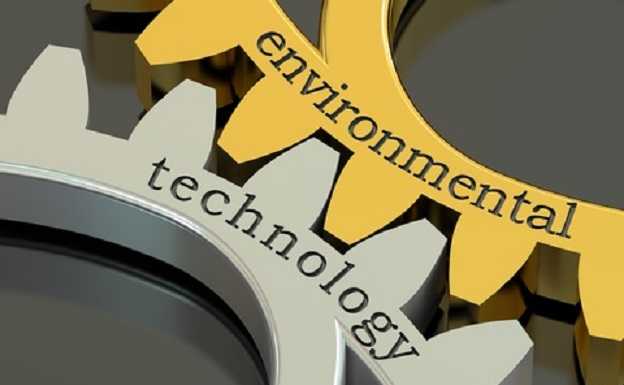Presenters at the latest Information Builders breakfast seminar, Powering IoT with an Information Management Strategy, provided a comprehensive view of what it will take for organizations to successfully secure, manage, analyze and monetize their rapidly growing data resources.

In his talk, Keys to Fast Delivery of IoT Projects, Matt McDowell, operational services manager with Hortonworks, noted the lack of understanding on the part of business around data security needs in an IoT world. While some data collection may seem harmless, the cumulative effect of gathering massive amounts of raw data can begin to compromise privacy and security, he said. “There is no data that should not be protected. You can never be complacent about data, no matter how innocuous it seems.”
He described threats to privacy from the simple use of temperature sensors: a home insurance company collecting temperature data from inside a home may notice temperature drops in homes in a specific region. Using that data, they can notify households in the region to turn up their heat and take measures to keep their pipes from freezing.
Take that type of monitoring a step further, however, and data can reveal personal circumstances. Data indicating certain homes are lowering their thermostats could be an indicator of financial hardship – something consumers would want to keep confidential. “Even though temperature data doesn’t sound sensitive, if the company derives any indication of the financial status of the household and their system is breached, [consumers] will be upset,” McDowell said.
Another scenario involves sensors for monitoring driving habits in cars (specifically, non-location-based data collection). “Usually companies collect accelerometer data on acceleration and turning. It sounds like you couldn’t do a lot with that. Over time, repeated turning patterns can indicate a person’s habits and destinations. Again, seemingly innocuous data has turned into something confidential.”

Steve Gindi, director, Content Security Sales for Cisco, followed with his thoughts on A Path to Better Security, by describing the exponential growth in ransomware attacks and the ecosystem that supports it. “When you look at the economy of hacking and ransomware, it is three to five times the size of the security industry. They run their business better than our own sometimes.”
There is a considerable evolution of ransomware variants, some of which are taking advantage of vulnerabilities that are multiple years old, he added. “Last week, for example, we saw 18 new variants of malware. When you think of IoT and Big Data, we have a big world of problems.”
Large organizations are now facing the challenge of having too many security devices that don’t talk to teach other, Gindi noted. “When an organization needs a firewall on the perimeter, they have a lot of options. From there, email protection, web protection and malware mean even more options. There can by over 100 variants to choose from to manage four types of security scenarios. If you have a problem, you have to go to each vendor, many of whom don’t speak the same language or share Big Data on threat intelligence. That is why we continue to lose [against hackers].”
Deploying different technologies to protect information creates a security effectiveness gap that only increases as complexity rises, he argued. While reducing complexity, an integrated architectural approach to threat defense delivers better security because it automates encryption between all the security devices to prevent hacks from happening.
“There will never be a single solution for security,” he concluded. “There is no magical tool. When you look at security, IoT and Big Data, there’s a lot of focus now on the architectural approach.”

Andy McCartney, Information Builders’ director of Product Marketing, BI and Analytics, concluded the session with his perspective on IoT analytics in a presentation entitled IoT as a Definitive Use Case for Big Data. “The purpose of business intelligence and analytics is to try to generate value from data,” he said. “But what does that value mean – better decision making, improved operational efficiency, revenue growth, increased competitive advantage, and/or enhanced customer service?”
McCartney offered several examples to demonstrate the IoT value proposition, including:
- The modern car – According to General Motors data, cars today have up to 200 sensors, up to 70 CPU modules for processing, and 47,000 data types that are reported. An active vehicle generates one petabyte of data for every working day, and higher end vehicles can process up to 20 million lines of code a day compared to 6.5 million for a Boeing 787 aircraft. “Those numbers will amplify further with autonomous cars, which are projected to reach 250 million cars by 2021,” McCartney said. Value can be achieved by collecting data to inform predictive maintenance, and through data harmonization and delivery to external stakeholders such as suppliers, police services, ministries, insurance companies, and drivers who can monetize much of it.
- Smart buildings – According to McCartney, commercial industrial buildings in the US are responsible for 50 percent of greenhouse gas emissions. Data capture from lighting, HVAC, security, energy use and storage systems, occupancy sensors, office equipment, network usage and parking sensors can be correlated rather than siloed, and leveraged to optimize cooling and ventilation, to match occupancy with energy use, to reduce waste and provide integrated billing. This approach has been known to achieve a 40 to 50 percent performance improvement, McCartney claimed.
- Retail – Data captured by climate controls systems, smart packaging and price tags, product displays, facial recognition and motion detection can be utilized to improve the customer experience (e.g. through coupons, in-store ads, etc.), to speed customer analysis, optimize supply chain activities, and to generate new revenue streams (e.g. smart pantries).
- Transportation – Data capture on movement, breakdowns, doors, fuel consumption and driver behaviour can be leveraged to improve driver safety, training, and route optimization.
- Healthcare – The number of people over 65 who are living alone is increasing. Data from sensors measuring cholesterol, blood pressure, glucose, movement and medication tracking, can be used for disease prevention, for developing proactive living programs, to manage costs, and for disease research and telehealthcare.
These represent only a small sampling of what can be achieved through IoT analytics. Ultimately, the challenge for organizations will be to establish the infrastructure and security needed to support these more advanced analytics capabilities.
For more information on how to uncover the true value of the data in an organization, the following documents are available for download:
Cisco: Cisco Ransomware Defense: Keep Ransomware at Bay
Information Builders: IoT Analytics: From Data Integration to Actionable Intelligence








